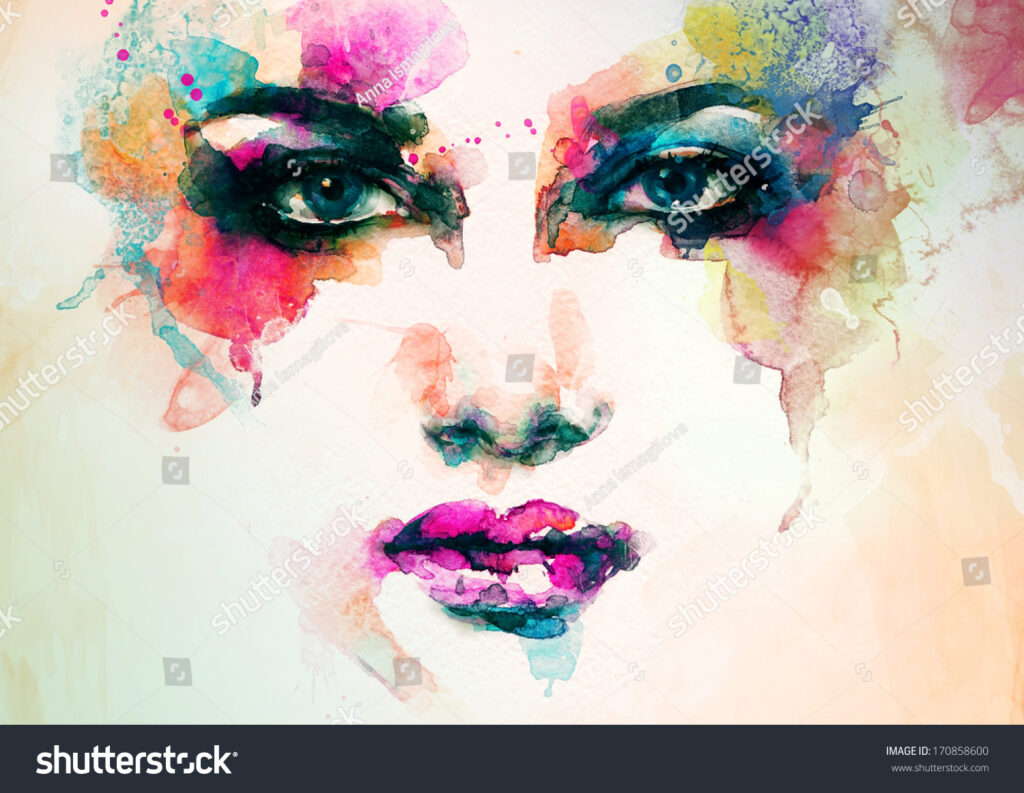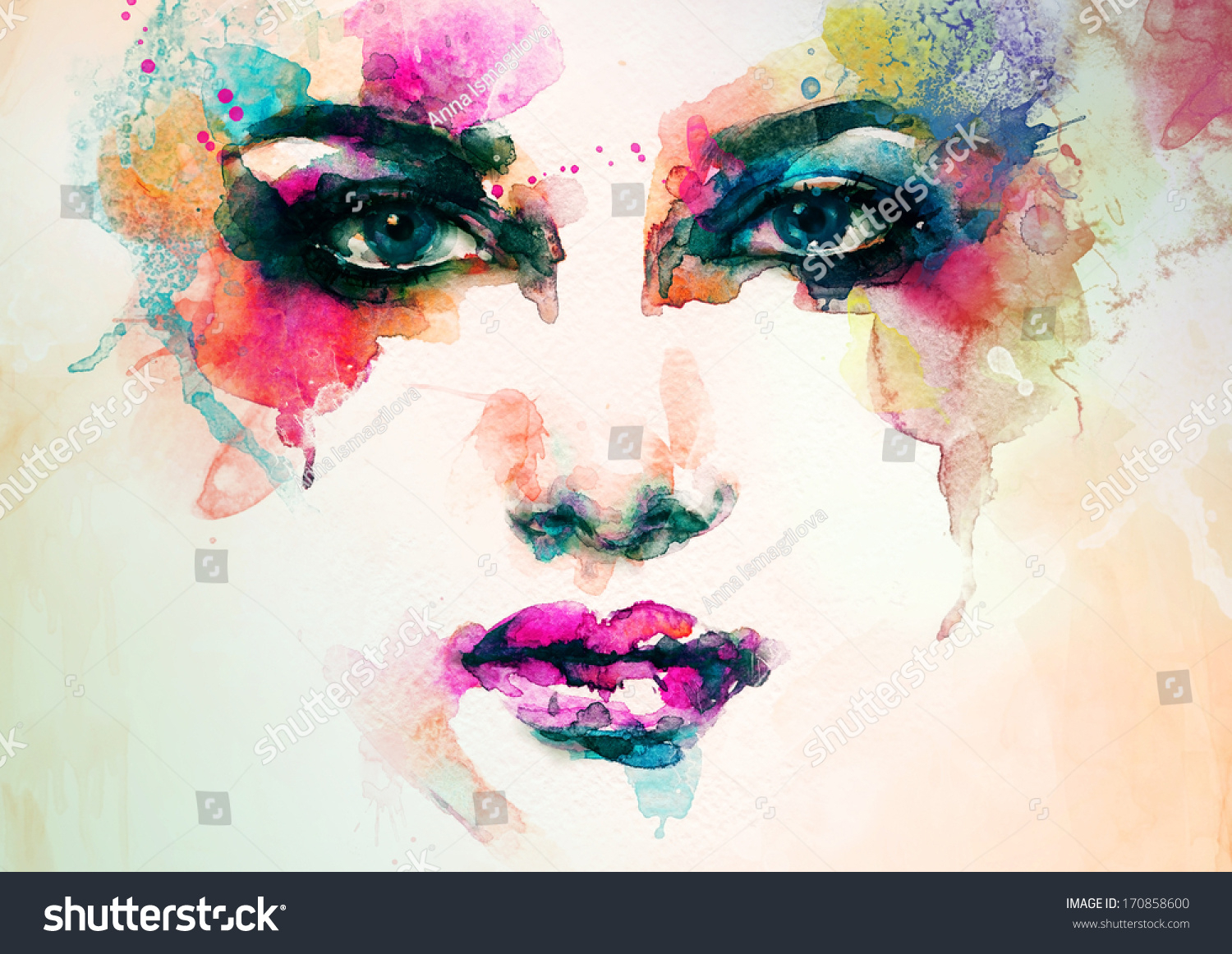
The Alluring World of Abstract Watercolor Artists: Techniques, Inspirations, and Key Figures
Abstract watercolor art offers a unique lens through which to view the world, moving beyond representational accuracy to explore the fluidity, transparency, and emotional depth inherent in the medium. An abstract watercolor artist harnesses the unpredictable nature of water and pigment to create evocative and often deeply personal expressions. This article delves into the techniques, inspirations, and key figures that define this captivating art form.
Understanding Abstract Watercolor
Before diving into the specific techniques and artists, it’s crucial to define what constitutes abstract watercolor art. Unlike representational watercolor, which aims to depict recognizable subjects, abstract watercolor focuses on elements like color, shape, line, texture, and composition. The goal is not to replicate reality but to evoke emotions, ideas, or sensations through non-representational forms. A skilled abstract watercolor artist understands the delicate balance between control and chance, allowing the water and pigments to interact in ways that create unexpected and beautiful results.
Key Characteristics of Abstract Watercolor
- Emphasis on Color: Color is paramount in abstract watercolor, used to create mood, contrast, and visual interest.
- Fluidity and Transparency: The inherent qualities of watercolor – its fluidity and transparency – are exploited to create ethereal and layered effects.
- Experimentation with Techniques: Abstract watercolor artists often push the boundaries of traditional watercolor techniques, incorporating unconventional methods and materials.
- Focus on Composition: Composition is crucial for guiding the viewer’s eye and creating a sense of balance and harmony.
- Emotional Expression: Abstract watercolor is often used as a means of expressing emotions and inner states, translating feelings into visual form.
Essential Techniques for Abstract Watercolor Artists
Several techniques are fundamental to creating compelling abstract watercolor paintings. Mastering these techniques allows an abstract watercolor artist to control the medium and achieve desired effects.
Wet-on-Wet Technique
The wet-on-wet technique involves applying wet paint to wet paper. This allows the colors to blend and bleed together, creating soft, diffused edges and atmospheric effects. This technique is ideal for creating backgrounds, skies, and other areas where a sense of depth and atmosphere is desired. Many abstract watercolor artists use this as a base for their work.
Dry Brush Technique
In contrast to the wet-on-wet technique, the dry brush technique involves using a brush with very little water to apply paint to dry paper. This creates a textured, broken effect, perfect for adding detail and contrast. The dry brush technique can be used to create a sense of roughness, age, or weathering. An abstract watercolor artist might use this to add textural elements to an otherwise smooth painting.
Lifting and Masking
Lifting involves removing paint from the paper after it has been applied. This can be done with a clean brush, a sponge, or even a paper towel. Lifting is useful for creating highlights, correcting mistakes, or adding texture. Masking involves using a liquid masking fluid to protect certain areas of the paper from paint. Once the paint is dry, the masking fluid is removed, revealing the untouched paper underneath. This technique is ideal for creating sharp edges and defined shapes. Abstract watercolor artists often combine lifting and masking for complex compositions.
Salt and Alcohol Techniques
These are experimental techniques that introduce unique textures. Sprinkling salt onto wet watercolor creates a crystalline effect as the salt absorbs the water and pigment. Once the paint is dry, the salt is brushed away, leaving behind a textured surface. Dropping alcohol onto wet watercolor creates a mottled effect as the alcohol repels the water and pigment. These techniques are often used by an abstract watercolor artist to add visual interest and unexpected details.
Layering and Glazing
Layering involves applying multiple washes of watercolor on top of each other. Each layer should be allowed to dry completely before the next is applied. This technique allows the artist to build up depth and complexity in the painting. Glazing is a specific type of layering that involves applying thin, transparent washes of color over existing layers. Glazing can be used to modify the colors and values of the underlying layers, creating subtle and nuanced effects. An accomplished abstract watercolor artist understands how to layer colors effectively.
Inspirations Behind Abstract Watercolor Art
The inspirations for abstract watercolor art are as diverse as the artists themselves. Some artists draw inspiration from nature, translating landscapes, seascapes, and botanical forms into abstract compositions. Others are inspired by music, poetry, or literature, using watercolor to express the emotions and ideas conveyed by these art forms. Still others find inspiration in their own inner lives, using abstract watercolor as a means of exploring their thoughts, feelings, and experiences. A thoughtful abstract watercolor artist often keeps a sketchbook to record inspirational ideas.
Nature as a Muse
Many abstract watercolor artists find inspiration in the natural world. The fluidity of water mirrors the movement of rivers and oceans, while the transparency of watercolor reflects the ethereal quality of light filtering through leaves or clouds. Artists may use colors and shapes to evoke the feeling of a particular landscape or to capture the essence of a specific natural phenomenon. [See also: Landscape Watercolor Techniques]
Music and Emotion
Music and emotion are closely intertwined, and many abstract watercolor artists use their work to express the feelings evoked by music. The rhythm, melody, and harmony of music can be translated into visual form through the use of color, line, and composition. Artists may use bold colors and dynamic lines to express excitement and energy, or soft colors and flowing lines to express peace and tranquility.
Inner Landscapes
Abstract watercolor can also be used as a means of exploring one’s inner landscape. The act of creating abstract art can be a meditative process, allowing the artist to connect with their thoughts, feelings, and experiences. The resulting artwork can be a visual representation of the artist’s inner world, reflecting their personal journey and unique perspective. For an abstract watercolor artist, the process can be as important as the product.
Key Figures in Abstract Watercolor Art
Throughout the history of art, several artists have made significant contributions to the development of abstract watercolor. These artists have pushed the boundaries of the medium, experimenting with new techniques and approaches, and inspiring generations of artists to come. Studying the work of these key figures can provide valuable insights into the possibilities of abstract watercolor. Understanding the evolution of the abstract watercolor artist is crucial.
Georgia O’Keeffe
Although best known for her large-scale paintings of flowers and landscapes, Georgia O’Keeffe also created a significant body of abstract watercolor work. Her watercolors are characterized by their bold colors, simplified forms, and sensual lines. O’Keeffe used watercolor to explore her own inner world, creating intimate and evocative images that reflect her unique perspective. The work of this abstract watercolor artist is highly influential.
Hilma af Klint
Hilma af Klint was a Swedish artist who is now recognized as one of the pioneers of abstract art. She created a series of abstract paintings, many of which were watercolors, that were inspired by her spiritual beliefs. Af Klint’s watercolors are characterized by their complex geometric forms, vibrant colors, and symbolic imagery. This abstract watercolor artist worked largely in secret, and her work was not widely known until after her death.
Paul Klee
Paul Klee was a Swiss-German artist who explored a wide range of styles and techniques throughout his career. He was particularly drawn to watercolor, using it to create dreamlike and whimsical images that often incorporated elements of abstraction. Klee’s watercolors are characterized by their delicate lines, subtle colors, and playful compositions. Any aspiring abstract watercolor artist would benefit from studying his work.
Alma Thomas
Alma Thomas was an African American artist who is best known for her vibrant and colorful abstract paintings. She began painting full-time after retiring from a career as a schoolteacher, and her work quickly gained recognition for its originality and beauty. Thomas’s paintings are often inspired by nature, and she used color and shape to evoke the feeling of light, movement, and joy. The influence of this abstract watercolor artist continues to grow.
The Enduring Appeal of Abstract Watercolor
Abstract watercolor continues to captivate artists and audiences alike. Its unique combination of fluidity, transparency, and expressiveness makes it a powerful medium for exploring the world around us and the world within us. Whether you are an aspiring artist or simply an admirer of art, the world of abstract watercolor offers a rich and rewarding experience. The journey of an abstract watercolor artist is one of constant exploration and discovery. [See also: Watercolor Painting for Beginners]
The beauty of abstract watercolor lies in its ability to evoke emotions and ideas without relying on representational accuracy. It is a medium that encourages experimentation, creativity, and personal expression. As long as there are artists willing to push the boundaries of the medium, abstract watercolor will continue to evolve and inspire.
In conclusion, becoming an accomplished abstract watercolor artist requires dedication, practice, and a willingness to embrace the unpredictable nature of the medium. By mastering essential techniques, drawing inspiration from diverse sources, and studying the work of key figures, artists can unlock the full potential of abstract watercolor and create truly unique and compelling works of art.

